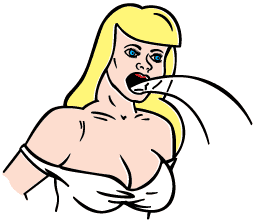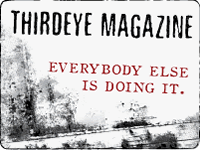
“I would rather be dumb than be a slut, but I would rather be a slut than be fat or ugly.”
This statement was made by an 18-year-old girl taking part in Lauren Greenfield’s widely acclaimed traveling photo series entitled “Girl Culture.” In the series, Greenfield photographs women and young girls, displaying their thoughts about their bodies and the obsessions resulting from the Westernized view of ideal beauty alongside the photos.
Unfortunately, statements such as this have become all too familiar among the youth of America. In 2004, the American Academy of Child and Adolescent Psychiatry estimated that ten out of every 100 women have an eating disorder. And with the media focused on thin, blemish-free, youthful women as the standard of perfect beauty, it’s not surprising that women claim dissatisfaction with their natural bodies, have low self-esteem, and turn to eating disorders for comfort and control.
But the pervasive trend of uber-thin and sexually enhanced women is not without dissent. Initiatives such as the Dove Self-esteem Fund, the Campaign for a Commercial-free Childhood, and the “Pact Against Anorexia” are attempting to curtail this destructive viewpoint.
Unachievable Ideal
Peruse almost any women’s magazine and you’ll notice that over half the content focuses on dieting and tips to look younger and more beautiful—methods that help women meet the media’s portrayal of ideal beauty. Even the dolls children play with are models of this ideal beauty. If an average woman were to actually look like a Barbie doll, she would have to grow taller by a few feet, add about four inches to her bustline, and reduce her waist by at least five inches. Back in 1997, Mattel pledged to make Barbie appear more realistic, with a larger waist and hips and a smaller bust, but the modifications have yet to be made.
If an average woman were to actually look like a Barbie doll, she would have to grow taller by a few feet, add about four inches to her bustline, and reduce her waist by at least five inches.
In ads and billboards women are portrayed with perfect skin, hair, and body proportions. If you examine the reality of these photos you will find that they have been altered to an extreme. The Dove Self-esteem fund, a program trying to change narrow definitions of beauty, features a video on their website demonstrating what’s really done to a model before and after her photo is taken. Blemishes are covered with excessive make-up or digitally removed by computer. The model’s body proportions are also changed digitally; her neck is thinned and lengthened, her eyes are enlarged, and shadows are created to better define her cheek bones.
So, can anything be done to alter these unrealistic and psychologically damaging depictions of ideal beauty?
The Home Front
In the U.S., there aren’t many programs trying to change our media’s obsession with sexually-charged fantasy. But there are programs seeking to promote healthy self-esteem, and organizations attempting to curb how much of this unrealistic beauty children digest. The Dove Self-esteem Fund is committed to showing women of all ages, all around the world, what true natural beauty is. They’ve also teamed up with the Girl Scouts of America to create “uniquely ME!” – a program that teaches young girls great self-esteem from an early age.
Pages: 1 2





No Comments so far ↓
There are no comments yet...Kick things off by filling out the form below.